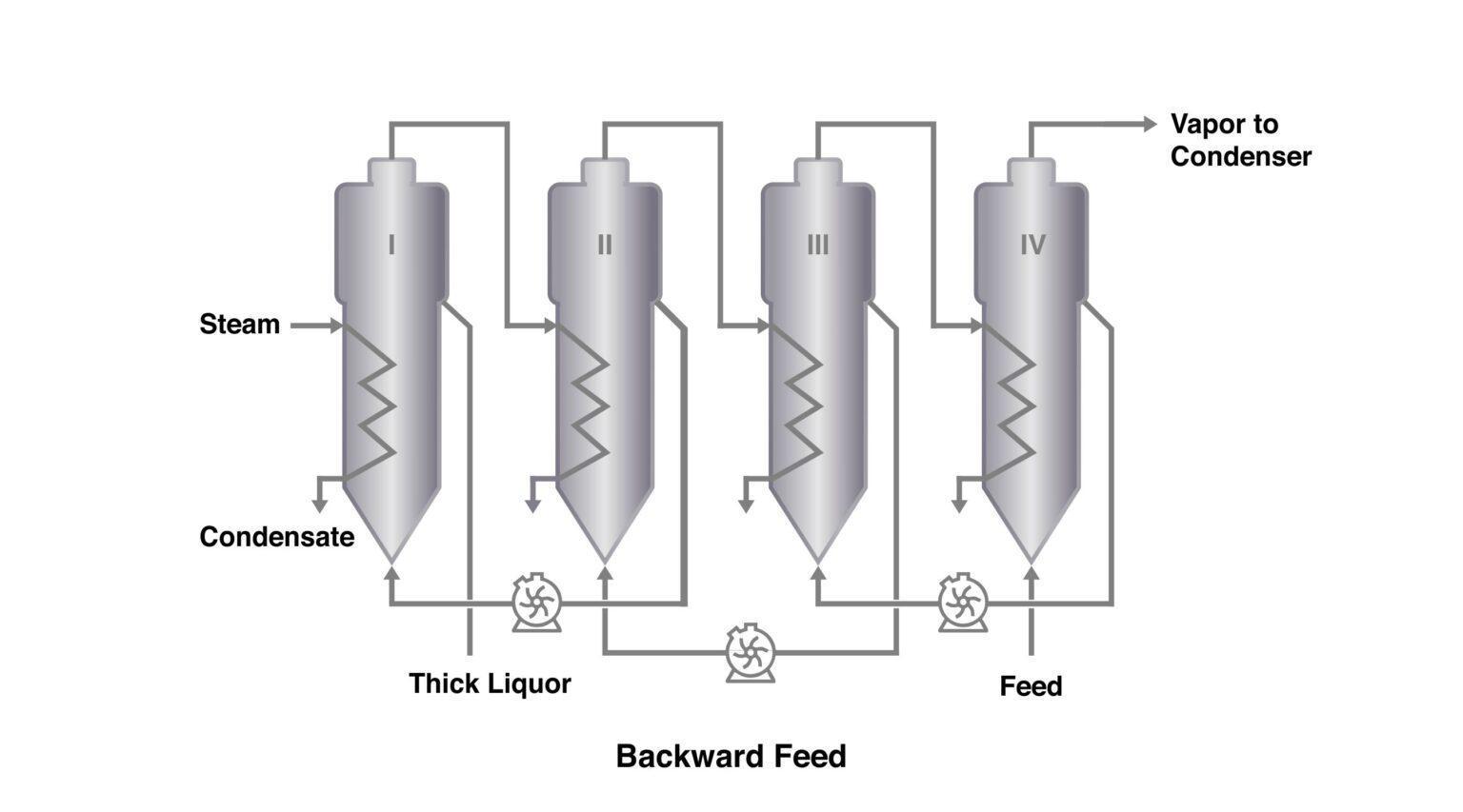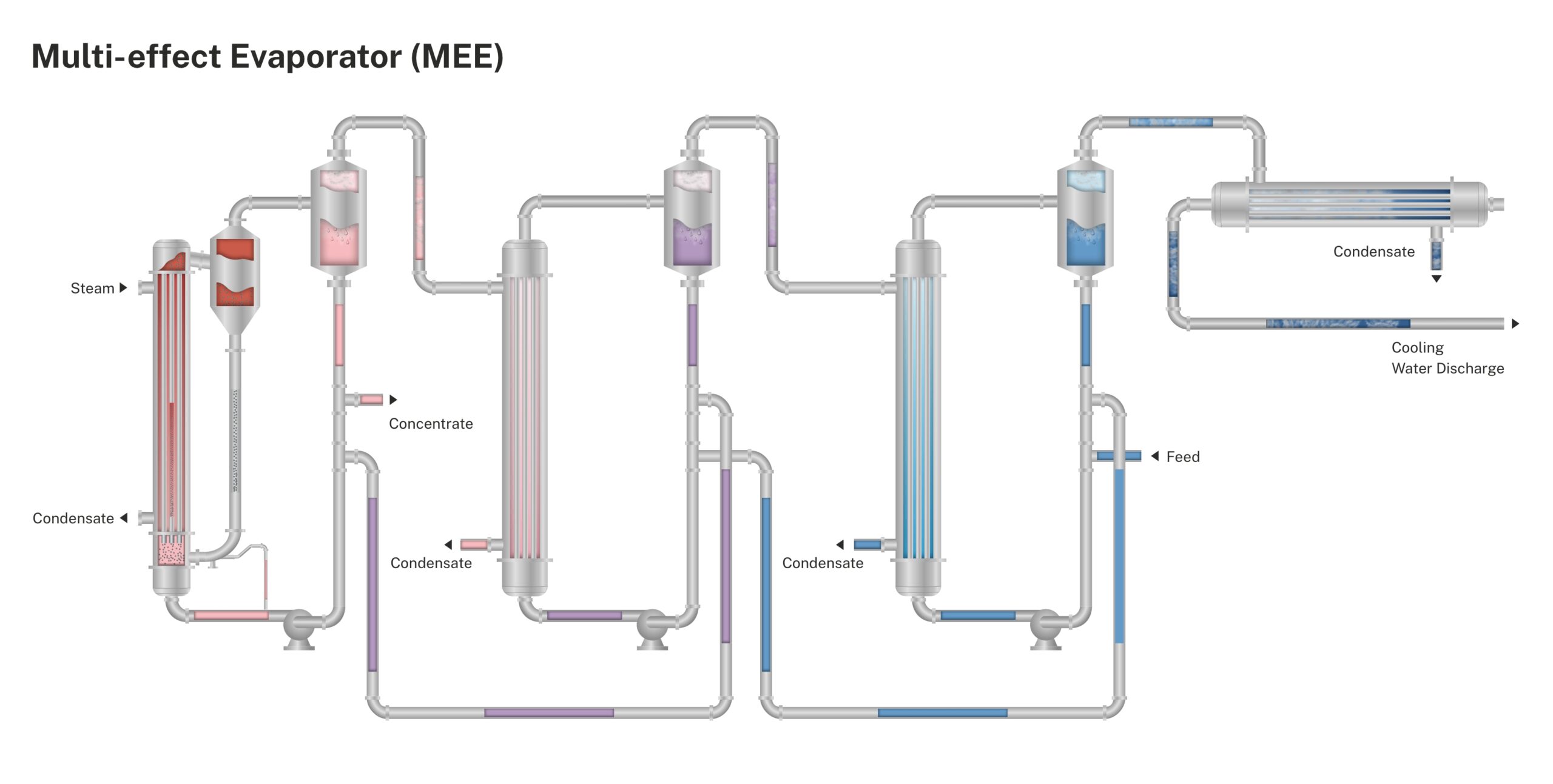Multiple Effect Evaporator (MEE) is a system consists of a sequence of heat exchangers – VLSs (vapor-liquid separators) used widely for many applications in industries to achieve evaporation and obtain desired concentration as output by using an efficient amount of heat source such as steam or hot water to evaporate water. Evaporation is normally stopped before the solute starts to precipitate in the operation of an evaporator. Most of the industrial evaporators have tubular heating surfaces. The tubes may be horizontal or vertical, long or short and the liquid may be inside or outside the tubes.
A typical feeding method of multi-effect evaporators is forward feed, where both feed and steam are introduced in the first effect and the feed passed from effect to effect parallel to the vapor from the earlier effect. Feeding the steam results in the formation of a small amount of water vapor, which is used to heat the second effect. The vapor releases its latent heat and condense. The released latent heat would result in the formation of a smaller amount of vapor in the second effect. This process is repeated in subsequent effects, until the vapor temperature becomes close to the feed sea water temperature.
The forward configuration requires a pump for feeding of the dilute feed to the first effect. Since a vacuum usually maintained on the last effect, the liquid from one effect to the next effect could be transferred without a pump as the flow occurs in the direction of decreasing pressure. However, a pump is required to remove the concentrated product from the last effect. Forward feeding operation is helpful when the thick liquor or concentrated product may degenerate if exposed to high temperature.

Another feeding method in the multi-effect evaporators is called backward feed configuration. In this type of MEE, heating steam is fed to the first effect whereas feed enters at the last effect, i.e., the coldest effect and is pumped through the successive effects. The backward feeding requires a pump between each pair of effects to transfer liquid from lower pressure effects to higher pressure effects. Backward feed is commonly used when products are viscous and exposure to higher temperature increases the rate of heat transfer due to reduction in viscosity of the liquid.

Many factors such as type of evaporator or heat exchangers, forced or natural circulation, feeding arrangement, boiling point elevation, heat transfer coefficient, fouling, tube size and arrangement must be carefully considered when designing evaporators.
Fouling is a major issue in heat exchangers of MEE plants as it affects both capital and operating costs of heat exchangers. Fouling layers reduce the overall operational performance of the MEE unit. This will result in economic losses due to increased energy consumption, maintenance, and cleaning. The buildup of fouling also increases the resistance of the fluid passing over the tubes. These side effects combine to increase the pressure drop across the heat exchanger, reducing the evaporation rates of the MEE plant.
Klaren Technology offers continuous cleaning solutions for either new or existing MEE units. A fluidized bed of solid particles is used at the tube side of the self-cleaning heat exchangers where the fouling liquid flows through. Self-Cleaning Heat Exchangers designed by us operate up to zero fouling. It should be highlighted that all effects of an MEE plant do not need a self-cleaning configuration. Which effect to select for self-cleaning is depending on the forward or backward feed configuration in combination with the composition of the wastewater.
Click on the image to enlarge



